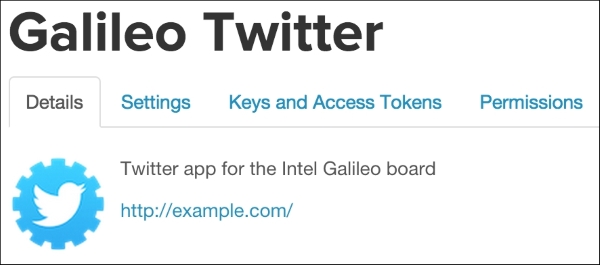In the previous chapter, you learned how to use the onboard Ethernet port, communicate locally with the board, and retrieve data from it.
In this chapter, we will perform a similar experiment. The only difference is that we will interface our board with web APIs. This gives us the option to broadcast our results through social media platforms, such as Twitter.
Here is a walk-through on how we are going to go about this:
We will structure our app using Express. Express is a flexible and minimalistic web app framework for Node.js, which provides a robust set of both mobile and web features. It integrates well with the Node.js platform.
Next, we will grab weather forecasts from the Internet and integrate them in our application.
Finally, we will use Twitter to post the data online. With this, we can regularly tweet weather updates through our Twitter account.
Let's proceed!































































